Words of wisdom as master trainer, Hubertus Schmidt conducts the Bates Masterclass at a Dressage with the Stars show. We learn yet again that the principles of training remain the same…
The horse Hubertus rode in the clinic was an imported Danish gelding, Come to Me (by Come Back II by Cor de la Bryère) who had been with Victorian dressage trainer, Charlotte Pedersen for around six months. In Denmark the horse was competing at Medium level.
Hubertus Schmidt makes the warm-up the cornerstone of the work. If he cannot get the horse relaxed, he cannot proceed: “It is essential that the muscle is loose, relaxed and stretched. This horse is pretty hot, which I like because I need that for Grand Prix but at the beginning, that can be a problem.”
Hubertus was not only riding but simultaneously commenting on a head mike: “He’s running away a bit, I want to get him longer in the neck and stretched to the bit.
But I don’t want it so there is no contact, I want a little contact on both hands, bending the horse to get the contact on both sides. I am riding in a rising trot, asking for a longer neck, the back loose, if the horse can’t stretch 100%, then he is not loose in the back.”
“If I give him the reins and he runs, that says he is not with me. I keep trotting until I can be soft with the hand, and he goes no faster. This is very important later for collection, so I can push him, but he goes no faster.”
“I would normally try to finish the warmup as fast as possible, but the horse is tense, that is why I am rising for so long… (and the horse relaxes and stretches a bit) BRAVE.. soooh.”
Hubertus is working on being able to give with his inside hand, without the horse immediately losing the flexion to the inside: “Mostly horses are too strong on the inside rein, then you cannot give half halts – now I am giving the inside rein and the horse is not running. BRAVE.”
Hubertus was well aware that the packed house had come to see something more complicated than unblocking a horse at trot, but instead he was showing them something far more crucial: “If you go to a competition with a young horse, or a hot horse, and you have to spend all the time for the warmup to get the horse loose, it is better to do that and then ride the test, than to cut short the warmup to work on the movements.”
It was time for a little break.
“We will walk, still on the reins, medium walk. Again I will ask him to bend a little, steady on the outside rein, loose on the inside, and see he stays bent, even with a loose inside rein.”
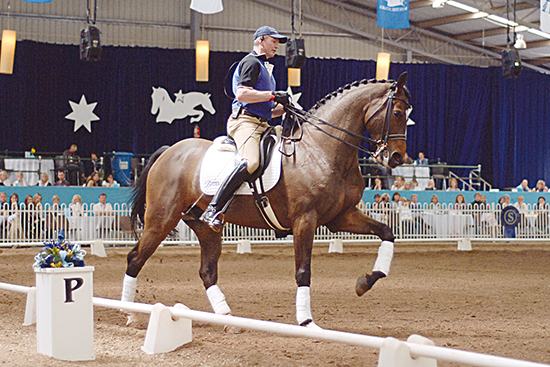
Canter – trot – canter transitions were next on the agenda: “He must be swinging in the back in the transitions, with the canter not too fast, not too strong, the strides as long as possible without being faster. Just a normal working trot to a normal working canter, without the horse getting shorter in the neck or running. Now I can give the reins and he is not running away – and he is hot this one! BRAVE.”
Hubertus’ current star, Escolar, demonstrates uphill, balanced canter for us
Time to improve on the quality of the pace: “Now I want him more uphill, with longer strides. He is a big big mover so it is harder to find the right balance. I don’t want a trot that is passagey, but a trot in the right cadence. He is stiff on the left side, so he always tries to run to the right when flexed to the left.”
Escolar keeps his big trot in shoulder in
“When we work now on the shoulder in and the half pass, my aim is to keep the impulsion so the horse moves as good as he did on a straight line – in this lateral work, I want to keep that big trot and make it better.”
“He is still a little running and I am trying to make him light, instead of the hindlegs under him, he moves the hindleg to the outside.”
Wansuela Suerte and Hubertus demonstrate hindlegs under, warming up at Aachen
“In this half pass left, it is not so easy. He loses the rhythm, gets a few good strides, then loses it. I want to keep him swinging and active in half pass, like normal trot.
I am doing half passes to make the trot better. It would be easier to let him slow down and make shorter steps, not crossing so much – that would be easier – but it is more important to make the basic gaits better. Make sure he keeps the impulsion. Each movement prepares for the next, shoulder in to half pass. Even when you move from a flat half pass to a steeper half pass, it is important to keep a good basic gait.”
story continues below the advertisement
Moving on to the canter work, Hubertus faced the same problems as he had in the trot: “I want to give the reins without him running away.
Hot horses are too willing to go forward. He must be able to bend to the inside but be absolutely on the outside rein. He must wait for me.”
Hubertus and Lento in pirouette in 2012 at Wiesbaden
Next Hubertus moves on to the canter pirouette, unlike many trainers, he does not want the horse to come into the movement in a travers position: “I prefer the horse on a straight line, horses want to naturally put their quarters in so they don’t have to carry as much weight. I try to keep him really straight, then shorter, shorter. I will accept that the horse is a little slow in the pirouette, he’s learning.”
Of course, the ‘pirouette’ we are talking about is the big working pirouette, not the competition movement: “When the horse takes the weight at the start of the pirouette, he wants to turn quicker. Then I take the outside rein. He must be 100% under control in this bigger pirouette, before I do a smaller one.”
story continues below the advertisement
Hubertus was also using the canter to improve the trot:
Hubertus demonstrating the trot he looks for with Lento
“Now the trot is better than before the canter. Really swinging, with a good feeling in the back. At home, I want it 100%, if the horse gets against the bit, against the hand, then we do it again – here in this clinic we have to make some compromises.”
Hubertus emphasised not letting the horse avoid the weight by bringing the quarters to the inside: “Really make the horse straight. With a younger horse, half a hoof shoulder fore, with an older horse straight. Especially on their crooked side they want to bring their quarters in – no, bring the front legs in front of the engine.”
This article originally appeared in THM March 2007.
Story by Chris Hector and photos by Roz Neave – Some archive pix of Hubertus have been added to further illustrate his points
There are more articles with Hubertus – go to his Who’s Who page for a directory:



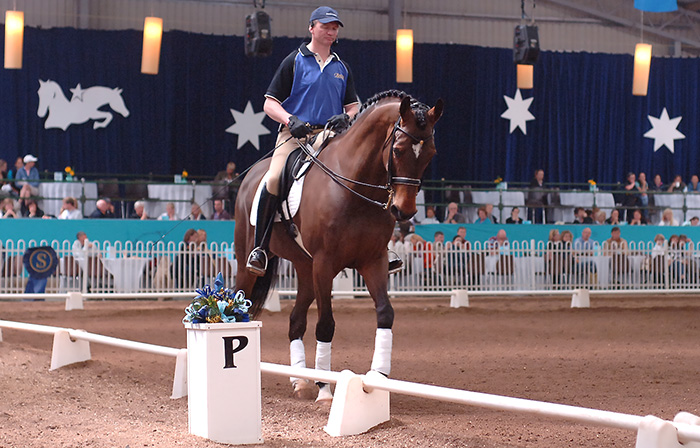
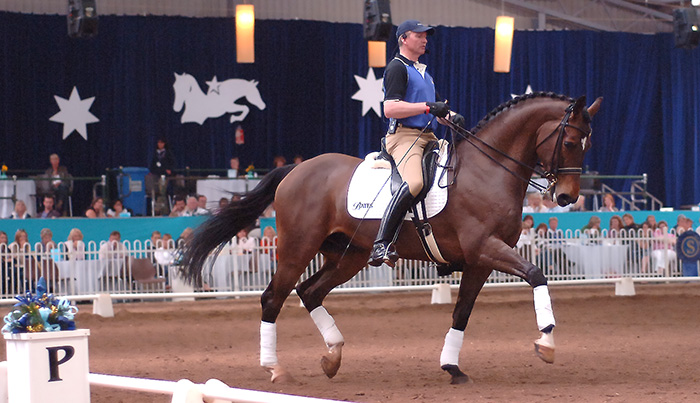
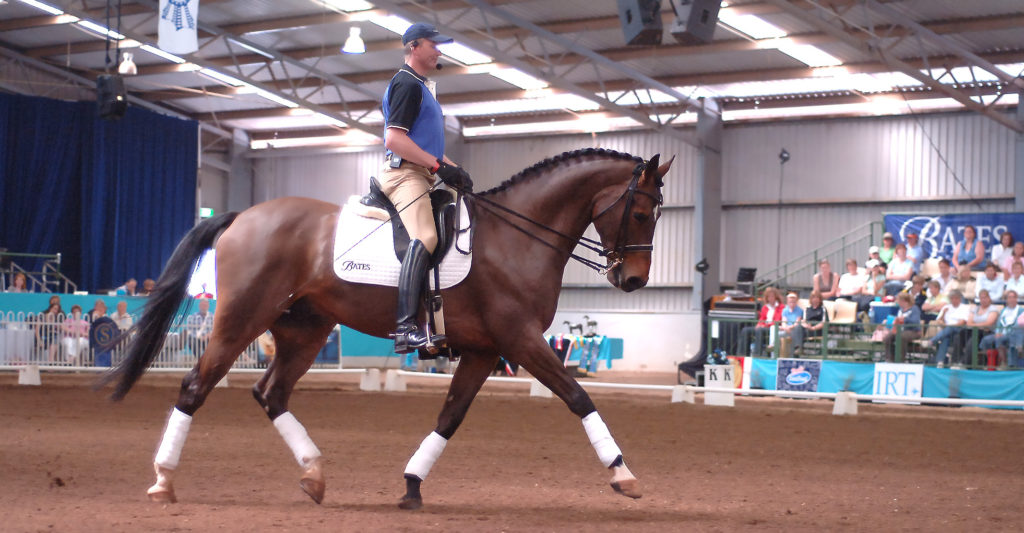
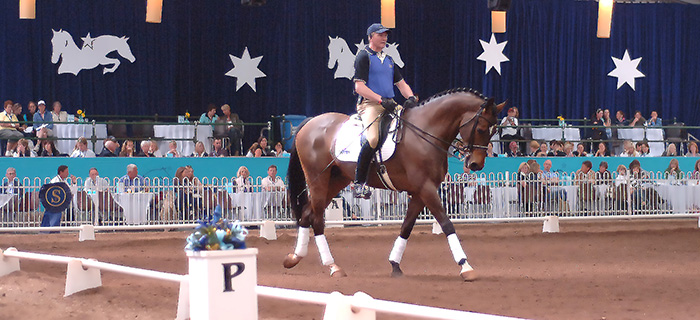
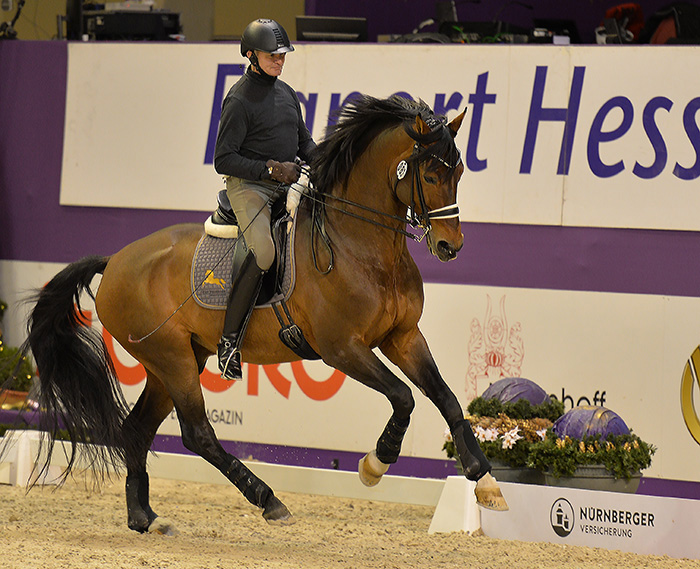
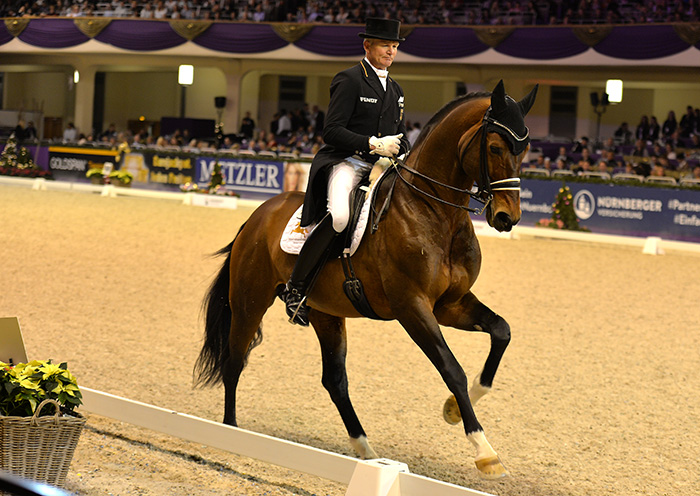
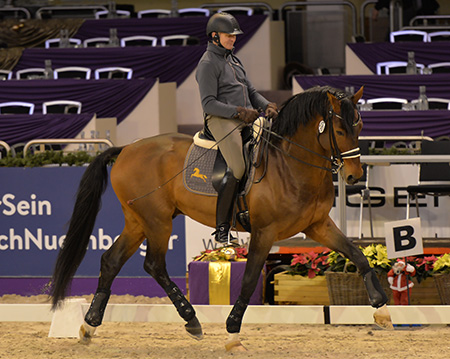
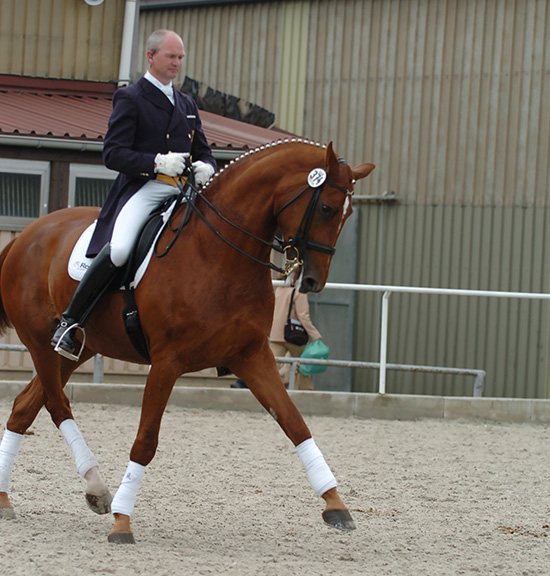
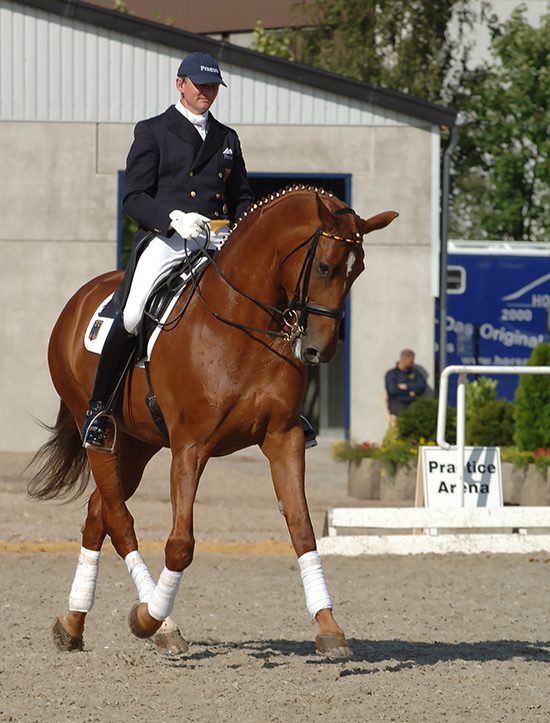
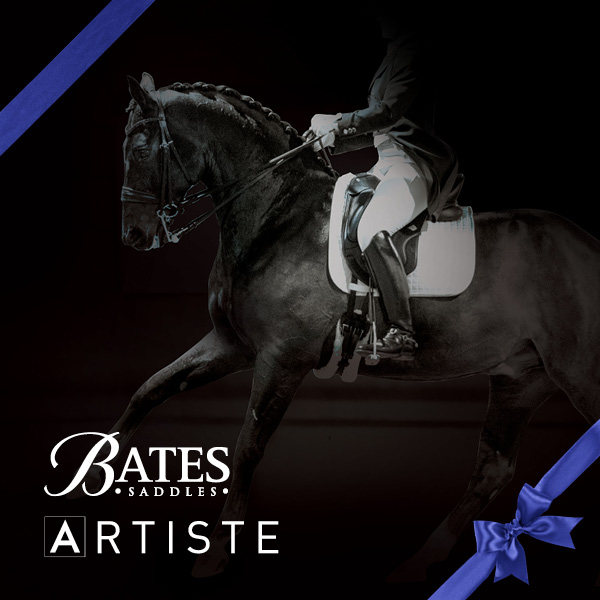
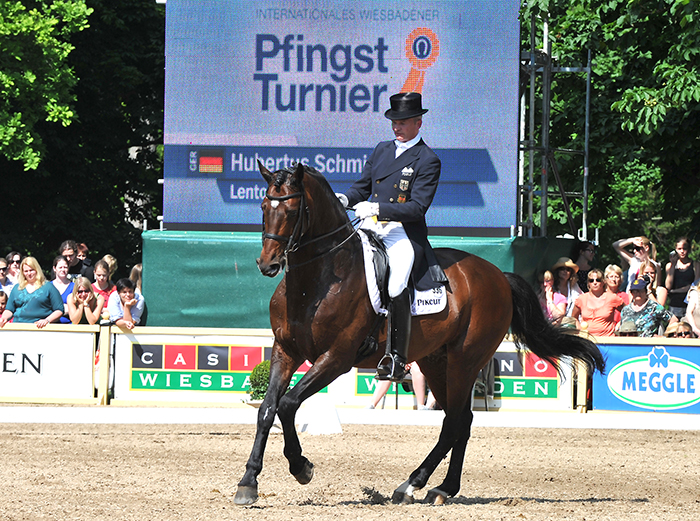
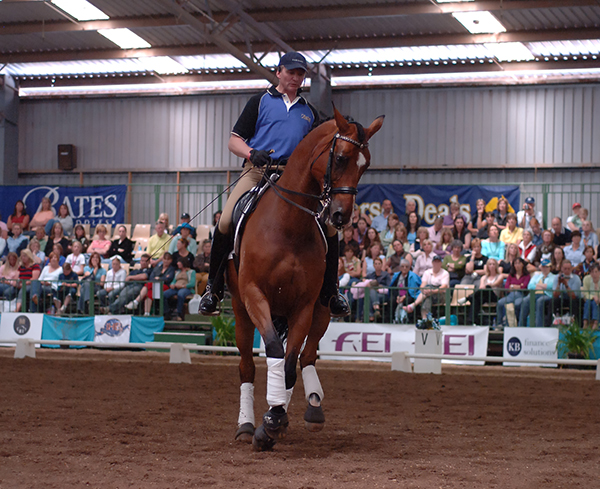
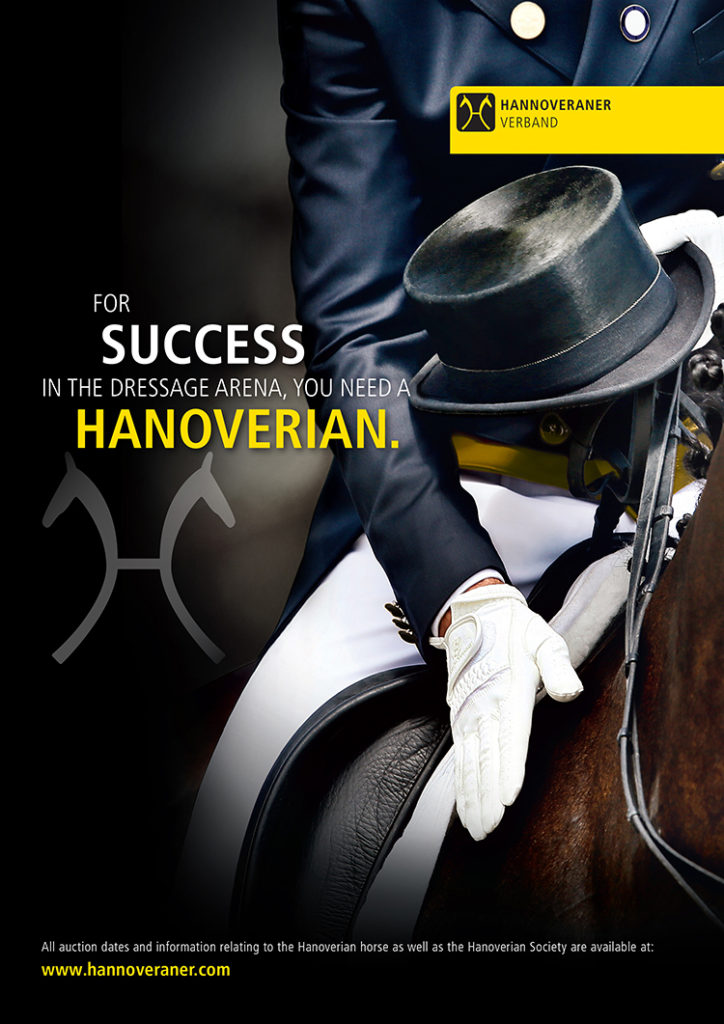
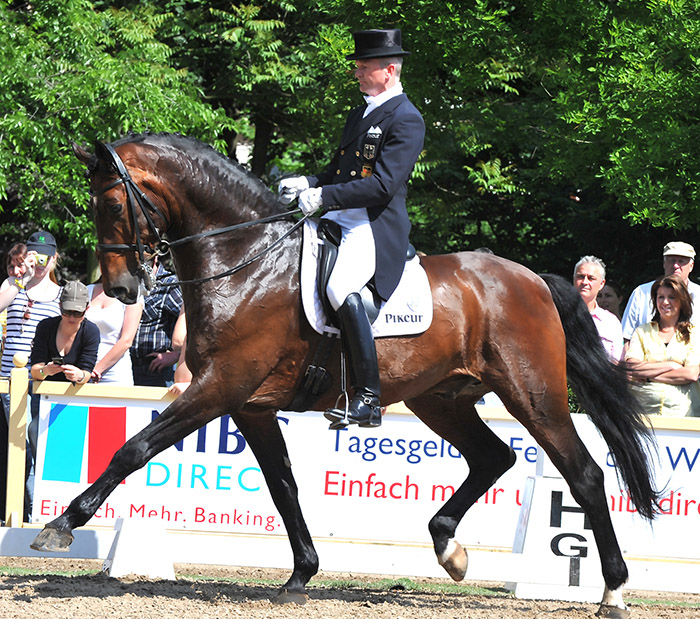

Wonderful article! I would just die to see the video of his rides though.